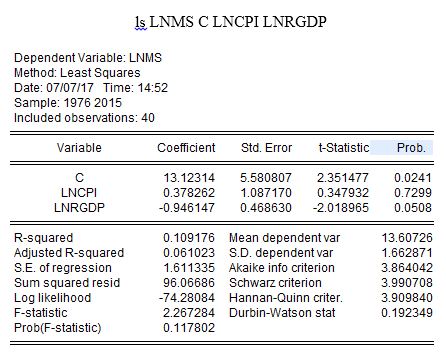

This is just the default summary for a list object with those elements. It is not in itself an econometrics book, nor is it a complete computer manual.
#HOW TO USE EVIEWS 10 TO RUN A REGRESSION MANUAL#
Note however that what you seem to have shown as an example is an ARIMA model, and there's no nice summary function for arima objects in R: > m = arima(lh, order = c(1,0,1)) 1.1 USING EVIEWS FOR PRINCIPLES OF ECONOMETRICS, 5E This manual is a supplement to the textbook Principles of Econometrics, 5th edition, by Hill, Griffiths and Lim (John Wiley & Sons, Inc., 2018). Sometimes things in the returned object may be calculated on transformed scales, and presented on untransformed scales when the object is printed. Logit models estimate the probability of your dependent variable to be 1 (Y 1). Logit regression is a nonlinear regression model that forces the output (predicted values) to be either 0 or 1. But always read the docs for the summary method to make sure you are getting what you think you are getting. Use logit models whenever your dependent variable is binary (also called dummy) which takes values 0 or 1. To get the t's and p's and all that for parameters, or the scaled covariance matrix. So you can do: > s = summary(glm(lot1 ~ log(u), data = clotting, family = Gamma)) The big win of R over GUI programs is generally that the output from functions is available. Residual deviance: 0.01673 on 7 degrees of freedom time-series forecasting arima econometrics eviews. I already developed and ARIMA (1,1,1) Model based on the autocorrelation and partial.
#HOW TO USE EVIEWS 10 TO RUN A REGRESSION SERIES#
Null deviance: 3.51283 on 8 degrees of freedom Forecasting 75 steps into the future ARIMA (1,1,1) Model EViews closed Good afternoon, I have an economics time series of around 3300 daily observations that go over 10 years.

(Dispersion parameter for Gamma family taken to be 0.002446059) Glm(formula = lot1 ~ log(u), family = Gamma, data = clotting)

See summary, which will produce summaries for most classes of regression object.įor example, from help(glm): > clotting summary(glm(lot1 ~ log(u), data = clotting, family = Gamma))


 0 kommentar(er)
0 kommentar(er)
